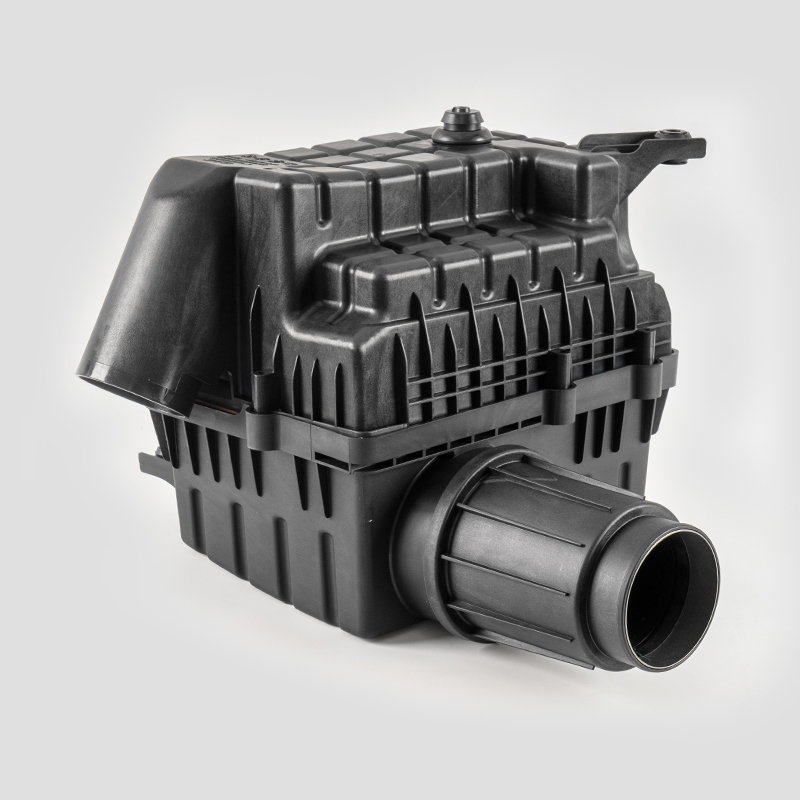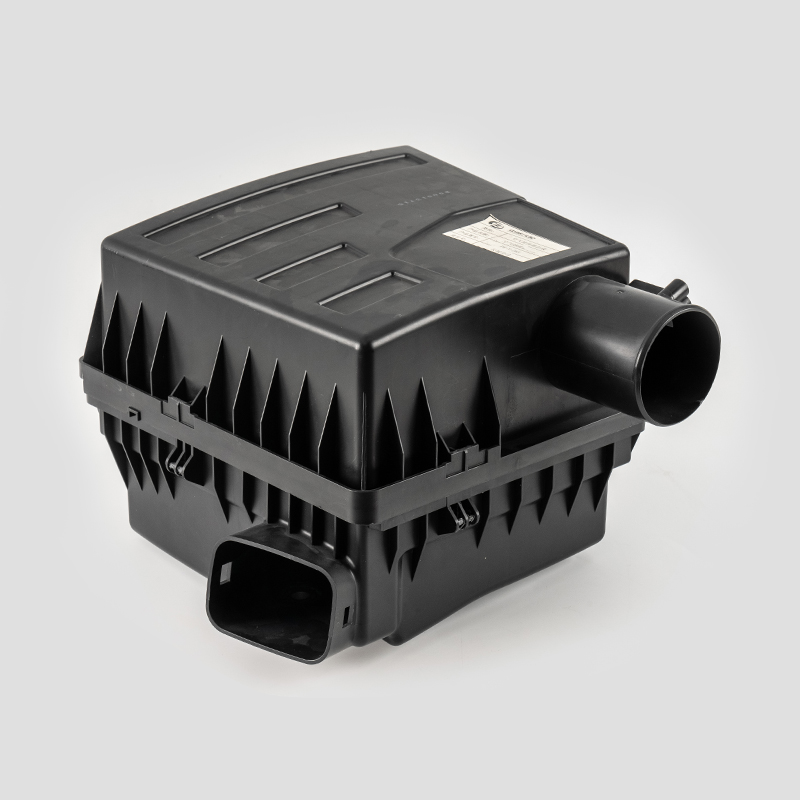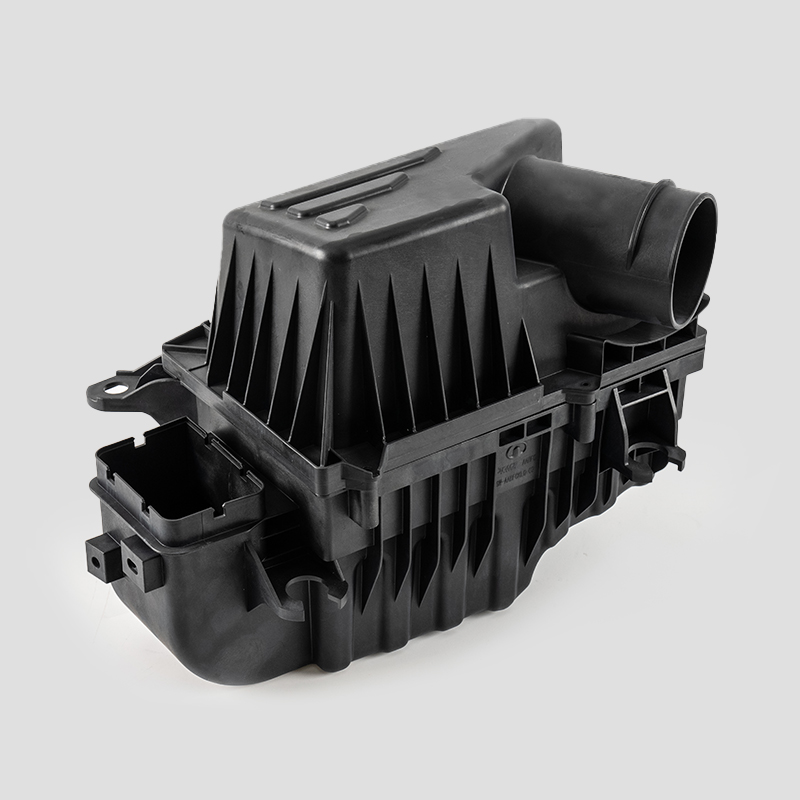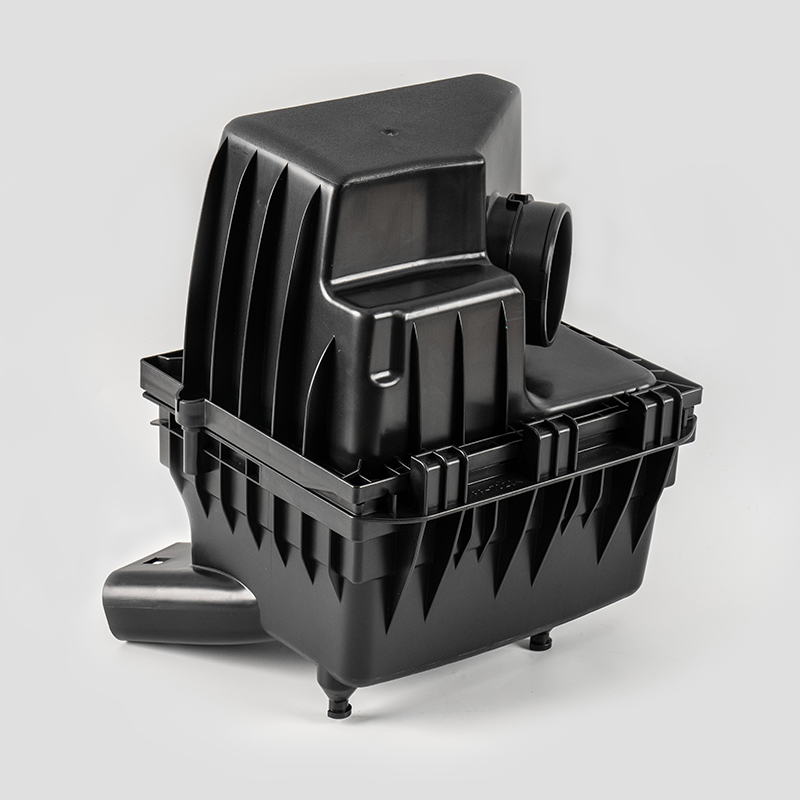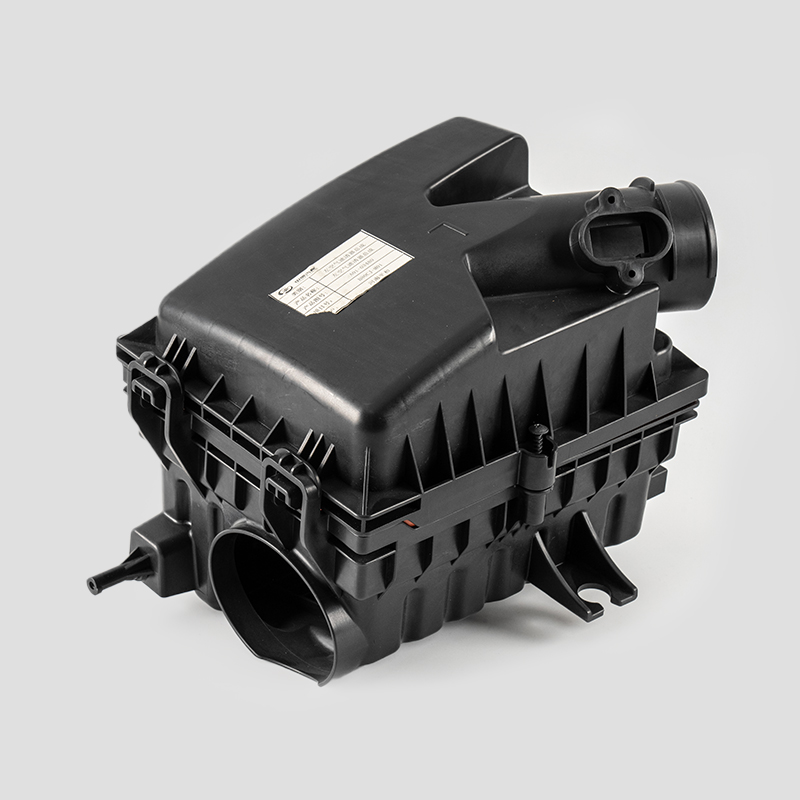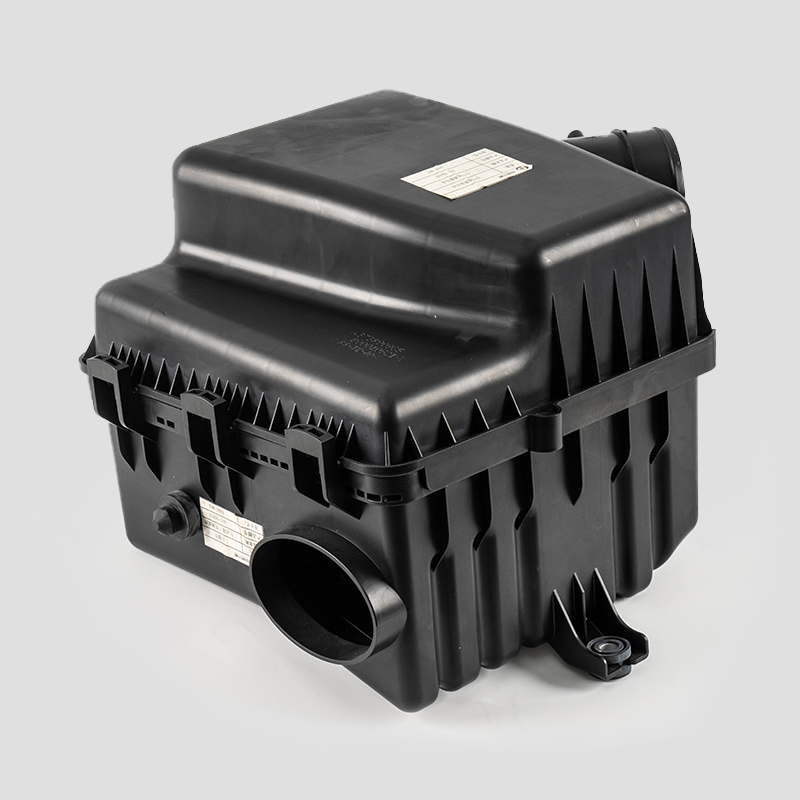How Does a Rubber Air Filter Outlet Duct Improve Engine Airflow?
Content
- 1 What Core Properties of Rubber Make It Ideal for Air Filter Outlet Ducts (vs. Plastic/Metal)?
- 2 How Does the Structural Design of Rubber Air Filter Outlet Ducts Optimize Airflow?
- 3 How Does a Rubber Air Filter Outlet Duct Contribute to Engine Performance (Beyond Airflow)?
- 4 What Factors Should Be Considered When Selecting a Rubber Air Filter Outlet Duct for Optimal Airflow?
- 5 What Maintenance Tips Help Preserve Rubber Air Filter Outlet Ducts and Sustained Airflow?
What Core Properties of Rubber Make It Ideal for Air Filter Outlet Ducts (vs. Plastic/Metal)?
To understand how rubber air filter outlet ducts improve engine airflow, we first need to recognize why rubber outperforms other materials (plastic, metal) in this critical role. Engine air intake systems demand ducts that balance flexibility, airtightness, and resistance to airflow disruptions—rubber excels in all three areas:
- Flexible Sealing to Eliminate Air Leaks: Unlike rigid plastic or metal ducts (which require precise, inflexible connections), rubber’s elasticity allows it to form a tight seal with both the air filter housing and the engine’s intake manifold. Engine vibration (common during operation) can loosen rigid duct connections over time, creating gaps that draw in unfiltered air (contaminating the engine) and disrupt airflow consistency. Rubber’s ability to “flex with vibration” maintains a leak-free seal—even in high-vibration environments (e.g., off-road vehicles, heavy-duty trucks)—ensuring 100% of filtered air reaches the engine.
- Smooth Internal Surface to Reduce Turbulence: Turbulence is the enemy of efficient airflow—swirling air molecules create resistance, slowing down the intake process and reducing the volume of air entering the engine. Rubber air filter outlet ducts are manufactured with a smooth internal surface (achieved via precision molding) that minimizes air friction. In contrast, plastic ducts often have mold seams or rough edges (from injection molding), and metal ducts may have welded joints—both create turbulence hotspots. Tests show rubber ducts reduce airflow turbulence by 20–30% compared to standard plastic ducts, allowing air to flow in a steady, laminar pattern.
- Temperature and Chemical Resistance to Maintain Shape: Engine bays reach high temperatures (120–180°C) and are exposed to oil, coolant, and fuel vapors—all of which can degrade inferior materials. Rubber (specifically EPDM rubber, the most common type for air ducts) resists heat deformation and chemical erosion, ensuring the duct retains its original shape during operation. A deformed duct (e.g., a plastic duct that melts and shrinks) narrows the airflow path, increasing resistance. Rubber’s stability means the duct’s internal diameter remains consistent, preserving optimal airflow volume.
- Vibration Damping to Prevent Resonance: Engine vibration can cause rigid ducts to resonate (vibrate at the same frequency as the engine), which creates pressure waves that disrupt airflow. Rubber’s natural damping properties absorb vibration, preventing resonance and keeping the airflow path stable. This is especially critical for high-performance engines, where even small airflow disruptions can reduce power output.
These properties lay the foundation for rubber’s ability to improve engine airflow—by addressing leaks, turbulence, shape stability, and vibration, rubber ducts ensure the engine receives a consistent, unobstructed supply of filtered air.
How Does the Structural Design of Rubber Air Filter Outlet Ducts Optimize Airflow?
Beyond material properties, the structural design of rubber air filter outlet ducts is engineered to further enhance airflow efficiency. Manufacturers tailor duct shape, diameter, and connection features to minimize resistance and maximize air delivery:
1. Gradual Diameter Transitions to Avoid Airflow Restriction
The air filter outlet duct connects the air filter housing (which has a fixed outlet size) to the engine’s intake manifold (which may have a different inlet size). A sudden change in diameter (e.g., a narrow filter outlet connected to a wide manifold via a duct with a sharp “step” in diameter) creates a bottleneck, forcing air to accelerate and decelerate rapidly—this increases turbulence and reduces flow rate. Rubber ducts use gradual diameter transitions (a tapered design) that smoothly expand or contract the airflow path. For example, a duct that transitions from 3 inches (filter outlet) to 4 inches (manifold inlet) over a 6-inch length allows air to adjust to the new diameter without turbulence. This design increases airflow volume by 15–20% compared to ducts with sharp diameter changes.
2. Curved Paths with Large Radii to Reduce Pressure Drop
Engine bays have limited space, so air ducts often need to curve around components (e.g., batteries, hoses). A tight curve (small radius) forces air to change direction sharply, creating centrifugal forces that push air against the duct walls—this increases pressure drop (a measure of airflow resistance) and turbulence. Rubber’s flexibility allows for large-radius curves (typically 2–3x the duct’s diameter) that let air flow smoothly around bends. For example, a 3-inch diameter rubber duct with a 6-inch radius curve has a pressure drop 50% lower than a plastic duct with a 3-inch radius curve. Lower pressure drop means more air reaches the engine with less effort, improving both power and fuel efficiency.
3. Reinforced Collars for Airtight Connections
The duct’s connections to the air filter housing and intake manifold are critical—even a small gap here can draw in unfiltered air (damaging the engine) and reduce airflow. Rubber ducts feature reinforced collars (thickened rubber rings) at both ends, designed to fit snugly over the filter housing’s outlet and the manifold’s inlet. Many collars also include a ribbed inner surface that grips the mating component, preventing slippage. Some high-performance ducts add a metal clamp (secured around the collar) to further enhance the seal. This airtight design ensures no filtered air is lost, maximizing the volume of air entering the engine.
4. Bellows Sections for Flexibility Without Flow Disruption
To accommodate engine movement (e.g., during acceleration or rough terrain), some rubber air filter outlet ducts include bellows sections—corrugated rubber segments that allow the duct to stretch or compress slightly. Unlike flexible plastic ducts (which use accordion-style folds that create turbulence), rubber bellows are designed with smooth internal ridges that minimize air disruption. The bellows’ flexibility ensures the duct doesn’t pull away from its connections (preventing leaks) while maintaining a smooth airflow path. This is particularly important for off-road vehicles, where engine movement is more pronounced.
5. Internal Venturi Features for Targeted Air Acceleration
In high-performance applications, some rubber ducts include internal venturi features—a narrow section in the duct that accelerates airflow. The venturi effect (faster air flow in a narrow passage) increases the velocity of air entering the intake manifold, which improves fuel-air mixing (a key factor in combustion efficiency). Rubber’s moldability allows for precise venturi shaping (e.g., a 2-inch narrow section in a 3-inch diameter duct) that’s difficult to achieve with rigid materials. Tests on performance engines show venturi-equipped rubber ducts increase airflow velocity by 10–15%, leading to a 5–8% boost in horsepower.
Each of these design features works in tandem to optimize airflow—by smoothing transitions, reducing curves, securing connections, allowing flexibility, and even accelerating air, rubber ducts ensure the engine gets the right amount of air, at the right speed, with minimal resistance.
How Does a Rubber Air Filter Outlet Duct Contribute to Engine Performance (Beyond Airflow)?
While improving airflow is the primary function of a rubber air filter outlet duct, its impact extends to broader engine performance metrics—power output, fuel efficiency, and longevity. These benefits are directly tied to the duct’s ability to deliver consistent, clean air:
1. Increased Horsepower via Improved Air-to-Fuel Ratio
Engines generate power by burning a precise mixture of air and fuel (the ideal ratio is 14.7:1 for gasoline engines). A rubber air filter outlet duct ensures a steady supply of filtered air, allowing the engine’s fuel injection system to maintain this optimal ratio. When airflow is restricted (e.g., via a leaky or turbulent duct), the fuel system may inject too much fuel (a rich mixture) to compensate—this wastes fuel and reduces power. Tests show vehicles equipped with rubber air ducts experience a 3–5% increase in horsepower compared to those with worn or inefficient plastic ducts. For high-performance engines (e.g., racing cars), this increase can be as high as 8–10%, thanks to the duct’s ability to deliver more air at higher velocity.
2. Better Fuel Efficiency by Reducing Intake Resistance
An engine has to “work harder” to draw air through a restrictive duct—this extra effort consumes more fuel. Rubber ducts reduce intake resistance by minimizing turbulence and maintaining a consistent diameter, so the engine expends less energy on air intake. Studies by automotive manufacturers show that switching from a clogged or inefficient duct to a new rubber duct improves fuel efficiency by 2–4% (e.g., a car that gets 30 MPG may see a 0.6–1.2 MPG increase). Over time, this translates to significant fuel savings—especially for commercial vehicles (trucks, vans) that log high mileage.
3. Extended Engine Life by Preventing Contamination
Air leaks in the duct (common with worn plastic or metal ducts) allow unfiltered air (containing dust, dirt, and debris) to enter the engine. These particles scratch cylinder walls, damage piston rings, and clog fuel injectors—all of which shorten engine life. Rubber ducts’ airtight seal (thanks to flexible collars and vibration resistance) ensures only filtered air reaches the engine. A study by the Society of Automotive Engineers (SAE) found that vehicles with properly sealed rubber air ducts have engines that last 15–20% longer than those with leaky ducts, as they experience less internal wear and tear.
4. Consistent Performance in Variable Conditions
Engine airflow needs change with driving conditions—e.g., high-speed highway driving requires more air than idling in traffic. Rubber ducts adapt to these changes by maintaining their shape and seal, ensuring airflow adjusts smoothly. For example, during acceleration, the engine’s intake demand increases—rubber’s flexibility prevents the duct from collapsing (unlike thin plastic ducts, which may cave in under negative pressure), so air flow volume increases to meet demand. This consistency means the engine performs reliably in all conditions, from stop-and-go traffic to high-speed driving.
What Factors Should Be Considered When Selecting a Rubber Air Filter Outlet Duct for Optimal Airflow?
To maximize airflow benefits, it’s critical to select the right rubber air filter outlet duct for your vehicle or engine. Here are the key factors to evaluate:
1. Material Type (EPDM vs. Neoprene vs. Silicone)
Not all rubber is the same—different rubber types have varying properties that affect airflow and durability:
- EPDM Rubber: The most common choice for standard vehicles. It’s heat-resistant (up to 180°C), affordable, and has good chemical resistance. EPDM ducts are ideal for daily drivers and light-duty trucks, as they balance performance and cost.
- Neoprene Rubber: Offers better oil and fuel resistance than EPDM, making it suitable for engines with high oil vapor levels (e.g., older diesel engines). However, it has a lower heat resistance (up to 150°C), so it’s not recommended for high-performance engines.
- Silicone Rubber: The premium option for high-performance or racing engines. It resists extreme heat (up to 250°C), has excellent flexibility, and maintains its shape under high pressure. Silicone ducts also have a smoother internal surface than EPDM, further reducing turbulence. They’re more expensive but deliver the best airflow performance.
Choose the material based on your engine’s operating conditions—EPDM for standard use, neoprene for oil-prone engines, and silicone for high-performance needs.
2. Duct Diameter and Length
The duct’s diameter must match the air filter housing’s outlet and the intake manifold’s inlet—too small a diameter restricts airflow, while too large a diameter can cause turbulence (air moves too slowly, leading to swirling). Measure the filter outlet and manifold inlet sizes before purchasing, and select a duct with a matching diameter. The duct’s length should be as short as possible—longer ducts create more surface area for friction, increasing resistance. However, if the duct needs to curve around engine components, prioritize a large-radius design over a shorter length with tight bends.
3. Compatibility with Engine Vibration and Temperature
Ensure the duct is rated for your engine’s maximum operating temperature (check the manufacturer’s specs) and vibration levels. For example, a heavy-duty truck engine generates more vibration than a passenger car engine—choose a duct with reinforced bellows or thicker rubber to handle the extra vibration. If your engine bay runs hot (e.g., turbocharged engines), opt for a heat-resistant material (silicone or high-grade EPDM) to prevent deformation.
4. Connection Type
Look for ducts with reinforced collars (as discussed earlier) and compatibility with your vehicle’s existing clamps. Some ducts come with pre-installed clamps, while others require you to reuse or purchase new ones. Ensure the collars fit snugly over the filter housing and manifold—loose connections lead to leaks. For high-performance applications, consider ducts with flanged ends (which mate with bolt-on connections) for an even more secure seal.
What Maintenance Tips Help Preserve Rubber Air Filter Outlet Ducts and Sustained Airflow?
To keep rubber air filter outlet ducts performing well and maintaining optimal airflow, follow these maintenance steps:
1. Inspect for Leaks and Damage Every 6 Months
Regular inspections catch small issues before they become big problems:
- Check the duct’s connections to the filter housing and manifold for gaps—use a spray bottle of soapy water to test for leaks (bubbles indicate air escaping).
- Look for cracks, tears, or bulges in the rubber—these can form due to age, heat, or chemical exposure. A cracked duct will leak air, reducing airflow efficiency.
- Inspect the collars and clamps—ensure clamps are tight (but not over-tightened, which can damage the rubber) and collars haven’t hardened or shrunk.
2. Clean the Duct Internally Annually
Dust and oil vapor can accumulate inside the duct over time, creating a rough surface that increases turbulence. To clean:
- Disconnect the duct from the filter housing and manifold.
- Use a soft-bristle brush (to avoid scratching the internal surface) and a mild, pH-neutral cleaner (e.g., diluted dish soap) to gently scrub the inside of the duct.
- Rinse thoroughly with water and dry completely with a lint-free cloth—moisture left inside can promote mold growth (which clogs airflow and damages the rubber).
3. Replace Hardened or Damaged Ducts Promptly
Rubber hardens over time (a process called “aging”) due to heat and UV exposure. A hardened duct loses its flexibility, making it prone to cracking and unable to seal properly. If you notice the duct is stiff (can’t be bent easily) or has cracks, replace it immediately. Most rubber air filter outlet ducts last 3–5 years—high-performance silicone ducts may last 7–10 years with proper care.
4. Avoid Using Harsh Chemicals Near the Duct
Keep oil, fuel, and solvent spills away from the duct—these chemicals can degrade the rubber, causing it to swell or crack. If a spill occurs, wipe it off immediately with a clean cloth and rinse the area with water (if possible). Avoid using harsh cleaners (e.g., brake cleaner) on or near the duct—stick to mild, rubber-safe cleaners.
By selecting the right duct, maintaining it regularly, and addressing issues promptly, you ensure the rubber air filter outlet duct continues to improve engine airflow, boost performance, and extend engine life.




 English
English Español
Español عربى
عربى